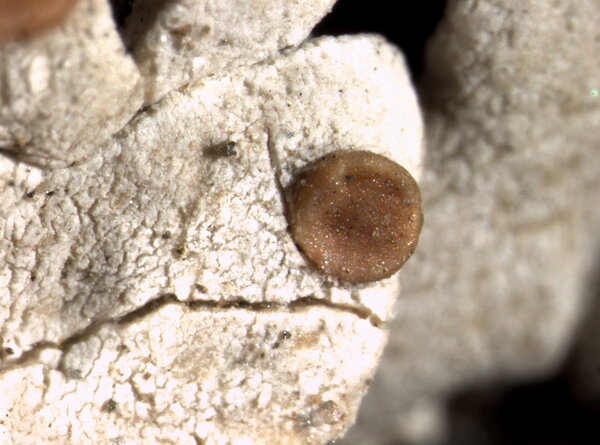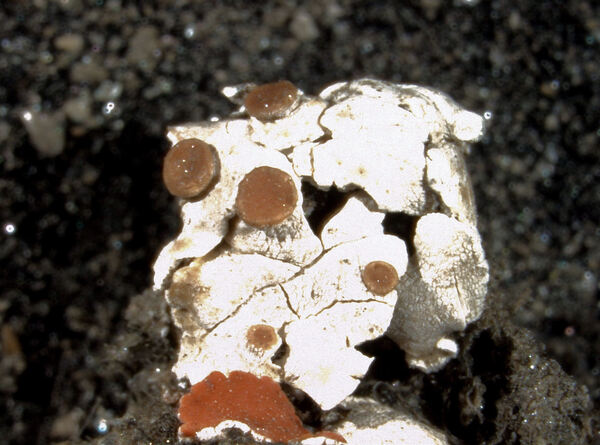Squamarina nivalis Frey & Poelt
in Poelt, Mitt. bot. Staatss. München, 2: 353, 1958.
Synonyms:
Distribution: N - TAA, Piem (Ravera & al. 2023b), VA (HAL-19091).
Description: Thallus squamulose to subcrustose, yellowish white, but usually cretaceous white-pruinose, closely adpressed, forming up to 5 cm wide, orbicular to irregular rosettes. Squamules 1-3 mm broad, contiguous, convex, the marginal ones more flattened, slightly longer or wider than the central ones, and indistinctly radiating; lower surface pale brown. Upper cortex paraplectenchymatous, well delimited against the thick, white medulla. Apothecia frequent, rounded, lecanorine/zeorine, at first immersed, then adnate, 1-3 mm across, with a pale to reddish brown, flat to finally convex disc and a smooth, thin, often finally excluded thalline margin. Epithecium brownish, granular, 10-30 μm thick, sometimes penetrating into the hymenium; hymenium colourless, 70-85 μm high, I+ blue; paraphyses slightly thickened above; hypothecium colourless. Asci 8-spored, clavate to cylindrical-clavate, the apical dome K/I+ dark blue, the wall I-, but the thin outer gel I+ blue, Bacidia-type. Ascospores 1-celled, hyaline, ellipsoid, thin-walled, (8-)11-15 x 5-8 μm. Photobiont chlorococcoid. Spot tests: thallus and medulla K-, C-, KC-, P-, UV-. Chemistry: cortex with usnic acid. Note: on wind-exposed outcrops of calcareous schists above treeline, sometimes on calciferous soil, reaching the nival belt in the Alps, where it is probably more widespread but certainly not common. The sample from Valle d’Aosta was collected by B. Feige near Plan Masson near Breuil, at 2500 m. The species is an altitudinal vicariant of the very similar S. lentigera, the distinction between the two species would need confirmation by a DNA-study.
Growth form: Crustose
Substrata: rocks, soil, terricolous mosses, and plant debris
Photobiont: green algae other than Trentepohlia
Reproductive strategy: mainly sexual
Commonnes-rarity: (info)
Alpine belt: extremely rare
Subalpine belt: absent
Oromediterranean belt: absent
Montane belt: absent
Submediterranean belt: absent
Padanian area: absent
Humid submediterranean belt: absent
Humid mediterranean belt: absent
Dry mediterranean belt: absent
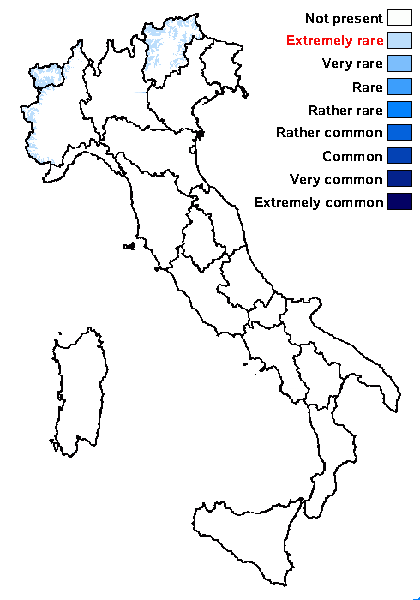
Predictive model
Herbarium samples
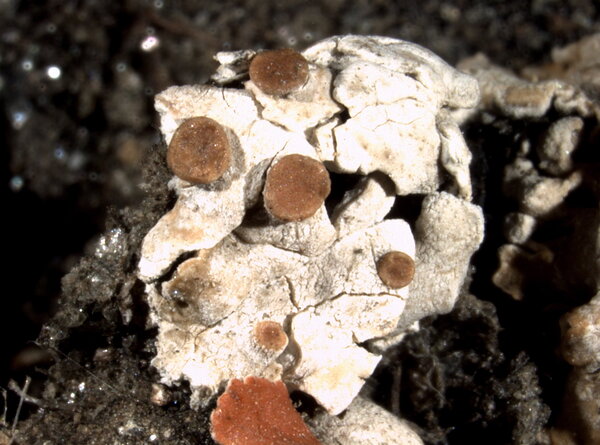

Pier Luigi Nimis - CC BY-SA 4.0
Alpi Cozie Ridge NW above Crissolo N above Pian di Melzè S-exposed slopes of calcareous schist (TSB 35340)
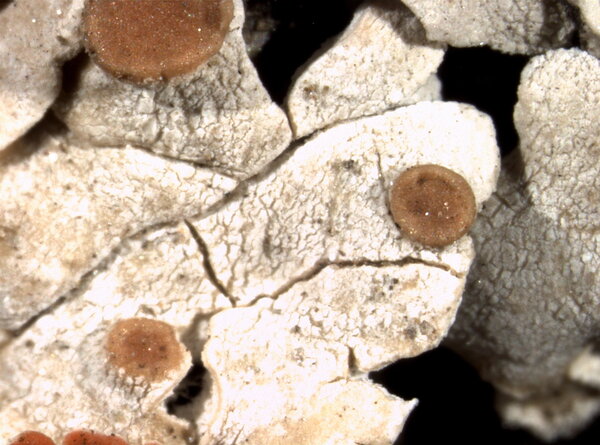

Pier Luigi Nimis - CC BY-SA 4.0
Alpi Cozie Ridge NW above Crissolo N above Pian di Melzè S-exposed slopes of calcareous schist (TSB 35340)
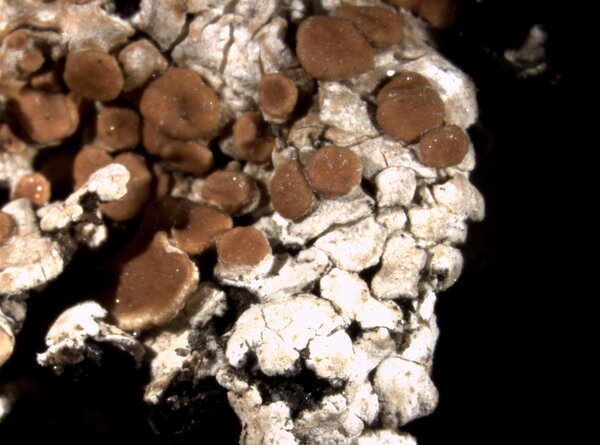

Pier Luigi Nimis - CC BY-SA 4.0
Alpi Cozie Ridge NW above Crissolo N above Pian di Melzè S-exposed slopes of calcareous schist (TSB 35340)
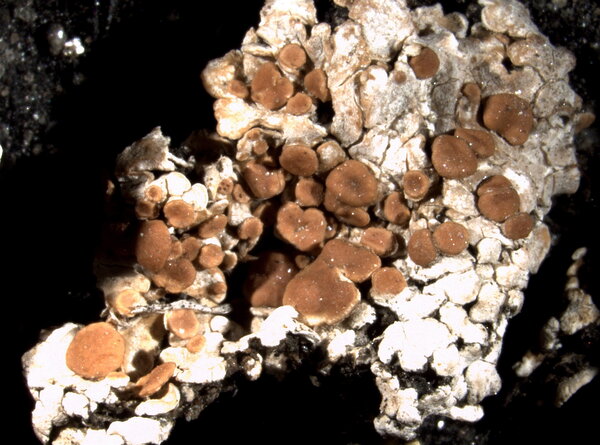

Pier Luigi Nimis - CC BY-SA 4.0
Alpi Cozie Ridge NW above Crissolo N above Pian di Melzè S-exposed slopes of calcareous schist (TSB 35340)


Pier Luigi Nimis - CC BY-SA 4.0
Alpi Cozie Ridge NW above Crissolo N above Pian di Melzè S-exposed slopes of calcareous schist (TSB 35340)
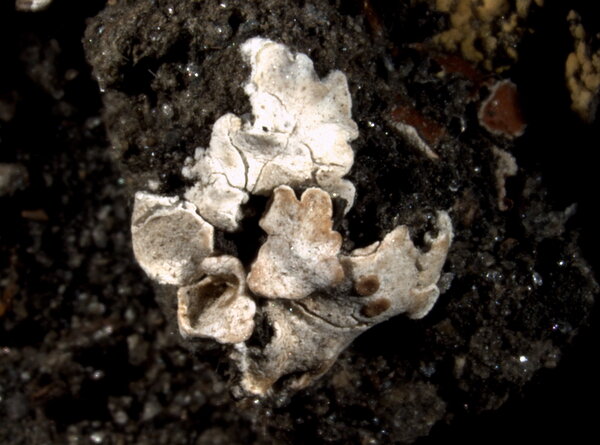

Pier Luigi Nimis - CC BY-SA 4.0
Alpi Cozie Ridge NW above Crissolo N above Pian di Melzè S-exposed slopes of calcareous schist (TSB 35340)
Growth form: Crustose
Substrata: rocks, soil, terricolous mosses, and plant debris
Photobiont: green algae other than Trentepohlia
Reproductive strategy: mainly sexual
Commonnes-rarity: (info)
Alpine belt: extremely rare
Subalpine belt: absent
Oromediterranean belt: absent
Montane belt: absent
Submediterranean belt: absent
Padanian area: absent
Humid submediterranean belt: absent
Humid mediterranean belt: absent
Dry mediterranean belt: absent

Predictive model
| Herbarium samples |


Pier Luigi Nimis - CC BY-SA 4.0
Alpi Cozie Ridge NW above Crissolo N above Pian di Melzè S-exposed slopes of calcareous schist (TSB 35340)


Pier Luigi Nimis - CC BY-SA 4.0
Alpi Cozie Ridge NW above Crissolo N above Pian di Melzè S-exposed slopes of calcareous schist (TSB 35340)


Pier Luigi Nimis - CC BY-SA 4.0
Alpi Cozie Ridge NW above Crissolo N above Pian di Melzè S-exposed slopes of calcareous schist (TSB 35340)


Pier Luigi Nimis - CC BY-SA 4.0
Alpi Cozie Ridge NW above Crissolo N above Pian di Melzè S-exposed slopes of calcareous schist (TSB 35340)


Pier Luigi Nimis - CC BY-SA 4.0
Alpi Cozie Ridge NW above Crissolo N above Pian di Melzè S-exposed slopes of calcareous schist (TSB 35340)


 Index Fungorum
Index Fungorum
 GBIF
GBIF
